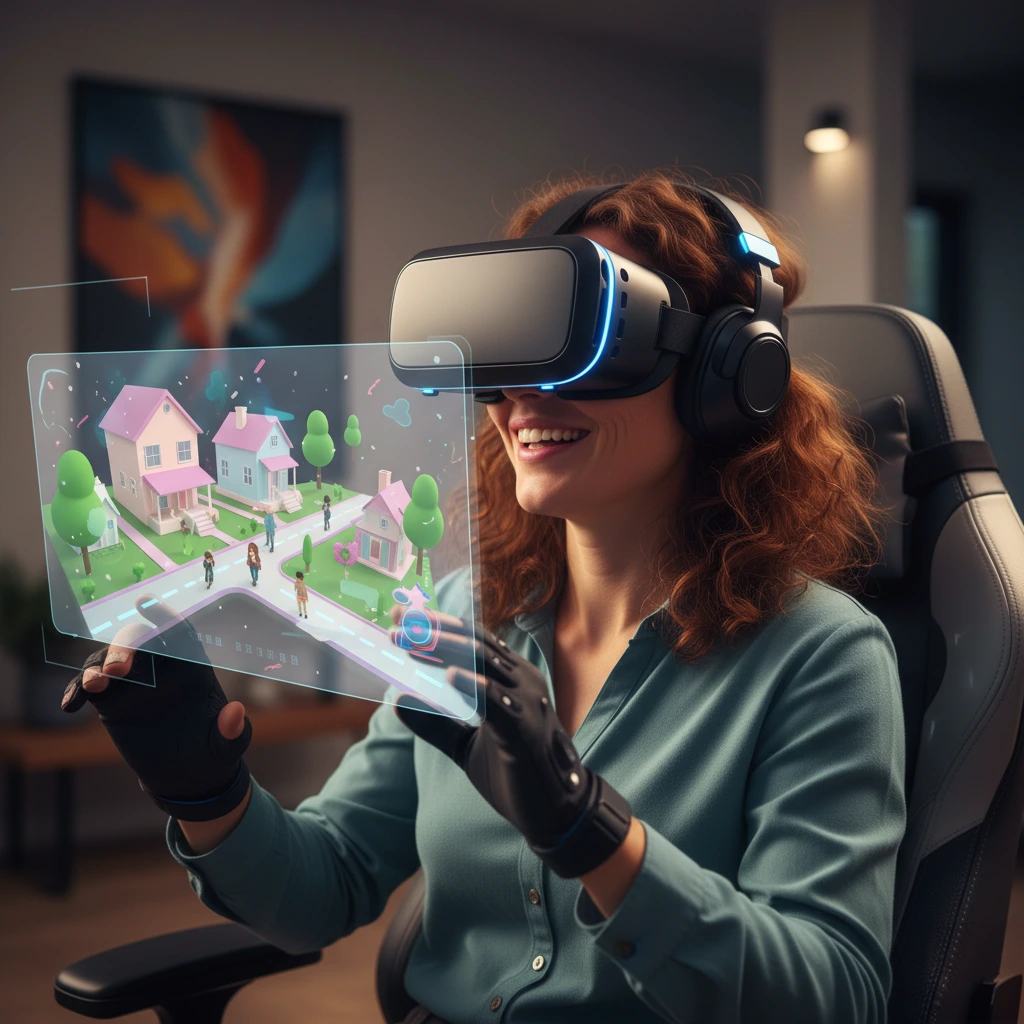Experience Centers 2.0: Turn Empty Plots into Vibrant Virtual Communities
Real estate sales centers haven't changed much over the years. You walk into a fancy office, look at a model apartment, check out a miniature version of the building, and flip through brochures with perfect renderings. It works, but it's hard to get excited about buying into a community that doesn't exist yet.
That's starting to change. Virtual experience centers in real estate are using VR and AR technology to let people actually experience what it would feel like to live in a development that's still just dirt and construction equipment. Instead of imagining your future neighborhood, you can walk through it virtually.
Walking Through Communities That Don't Exist Yet
The technology behind immersive neighborhood tours originally came from tourism and heritage preservation. Museums use it to let visitors explore ancient Rome or walk through historical sites that no longer exist. Real estate developers can now use the same approach to showcase future communities.
Picture this: you're standing on an empty construction site, but through a VR headset, you're walking down a tree-lined street. Kids are playing in the park, there's a coffee shop on the corner, and you can see exactly where the recreational center will be. This future community visualization lets developers sell not just an apartment, but an entire lifestyle.
The technology works particularly well for large township developments where developers are building entire neighborhoods from scratch. Instead of trying to explain where the shopping areas will be or how the community spaces will feel, they can show you.
Read Also: Real Estate Virtual Tour: Showcase Your Property With AI
How AR/VR Township Marketing Actually Works
The tech side breaks down into two main approaches, each with different strengths.
Virtual Reality
VR creates a completely digital environment. You put on a headset and suddenly you're standing in the future community. You can walk around, look inside buildings, even sit on a bench in the virtual park. This virtual space in real estate becomes a digital twin of what the finished development will look like.
The downside is that VR can feel disconnected from the actual location. You might get a great sense of the community layout but lose track of how it relates to the surrounding area.
Augmented Reality
AR overlays digital information onto the real world. A sales agent can use a tablet to show you exactly where your balcony will be and what the interior will look like, all while you're standing on the actual construction site.
AR/VR township marketing works best when developers combine both approaches. VR for the full community experience, AR for connecting that experience to the actual site.
Read Also: How Virtual Staging Software Is Transforming Real Estate
What This Means for Buyers and Developers
For buyers, the VR experience in real estate removes a lot of uncertainty. Instead of trying to imagine what the community will feel like based on floor plans and artist renderings, you get a realistic sense of the space and atmosphere. You can understand whether the layout actually works for your family's needs.
For developers, it's become a powerful sales tool. These virtual experiences create emotional connections with buyers in ways that traditional marketing materials can't match. People remember walking through the virtual community park with their kids, not the bullet points in a brochure.
Ready to take your real estate demos to the next level with AR/VR? Contact KiXR today for ready-to-deploy solutions!
FAQs
What is the immersive experience in real estate?
The immersive experience uses VR and AR technology to let potential buyers virtually explore properties and communities before they're built. Instead of relying on floor plans and renderings, people can walk through spaces, understand scale and layout, and get a realistic feel for what living there would be like.
What is virtual space in real estate?
Virtual space refers to the digital environments that mirror planned real estate developments. These detailed 3D models allow buyers to experience future communities through VR headsets or AR devices, providing a realistic preview of spaces that exist only on paper.
What is the VR experience in real estate?
The VR experience in real estate involves using virtual reality headsets to explore detailed digital recreations of properties and communities. Buyers can walk through virtual apartments, experience community amenities, and understand neighborhood layouts as if the development were already complete.
How does virtual real estate work?
Virtual real estate works by creating detailed 3D digital models of planned developments. Users can explore these models through VR headsets for full immersion or AR devices that overlay virtual elements onto real-world construction sites. The technology helps buyers visualize finished communities and make more informed purchasing decisions.
Kavita has been adept at execution across start-ups since 2004. At KiKsAR Technologies, focusing on creating real life like shopping experiences for apparel and wearable accessories using AI, AR and 3D modeling


